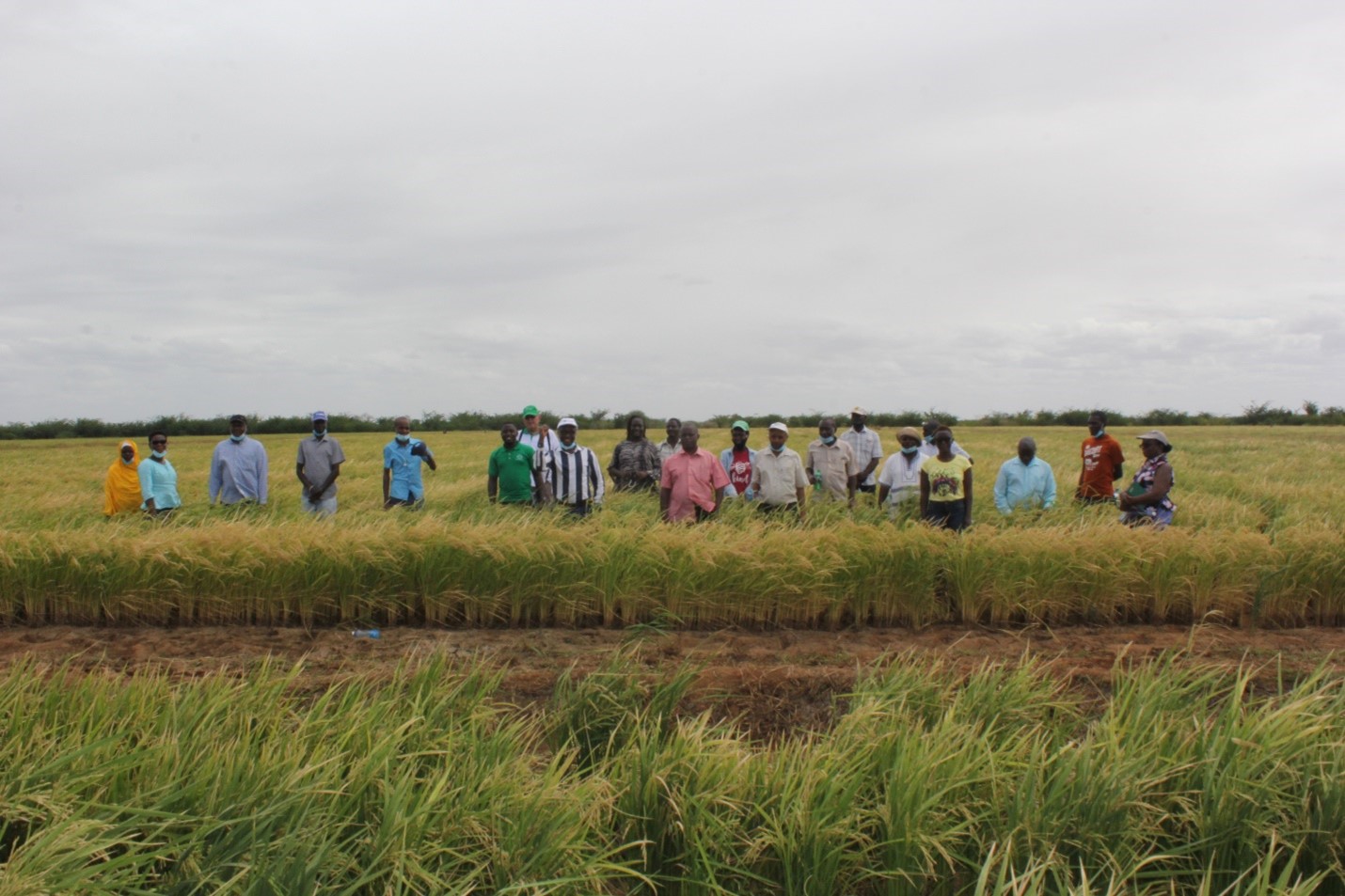
A cross section of stakeholders including policy makers, scientists and farmers at the 2021 annual review meeting of the NEWEST Rice project of the AATF has called for increase domestic production of rice on the African continent to meet the ever-increasing demand.
Dr Kayode Sanni, AATF Rice Project Manager said in an opening address to the meeting that there is an urgent need to increase domestic rice production in Sub-Saharan Africa to meet demand of rapidly growing population.
“Rice is a strategic crop for food security in Africa, consumption currently stands at 33.2million MT of milled rice of which 12 million is imported, importation is expected to reach over 20 million MT by 2026,” he said.
Dr Sanni noted that low yield associated with rice in Africa is worrisome as farmers on the continent were only producing 2.2 MT/ha as compared to global average of over 4.5 MT/ha.
One of the challenges responsible for the low productivity in the fact that 4.4 million tons of nitrogen is lost from Africa’s soils yearly while over 80% of agricultural land is nitrogen N deficient and over 70% of rice farmers are smallholders without access to, or ability to purchase fertilizers, he added.
Prof. Abdullahi Mustapha, Director General National Biotechnology Development Agency said at the meeting that Soil nitrogen deficiency and drought have been cited as key constraints to rice production in Africa and Nigeria by extension.
“It has been ascertained that the production of Rice alone is responsible for more than 15% of fertilizer usage worldwide. We all know that the deadly gas, nitrous oxide (N2O) is principally sourced from the application of fertilizer Globally. Greenhouse gases that trap heat in the atmosphere much like the roof of a greenhouse traps heat to protect the plants growing in it from cold weather and frost are one of the main factors accelerating global warming.
Nitrous oxide has a warming potential ~300 times greater than the most mentioned greenhouse gas, carbon dioxide (CO2). Improved nitrogen use efficiency within rice production systems will increase crop yields, lower the continent’s nitrogen fertiliser deficit, reduce its soil nutrient depletion, and protect water quality, Prof. Mustapha said.
According to him, with majority of farmers unable to buy and apply the required rate of fertiliser for optimal yield, nitrogen deficiency remains a key concern. Nitrogen deficiency is predominant in rainfed (both upland and lowland) areas. It is mostly acute in the highly weathered upland areas (about 38% of the cultivated rice area) where an average yield of only one ton per hectare, which is about 25 percent of yield potential.
“In lowland areas (33% of the cultivated rice area), it is difficult to retain applied nitrogen due to floods and flowing water that characterise such areas. On the other hand, 80 percent of rice farms traditionally depend on the unreliable rainfall and are unable to afford irrigation facilities making drought a major concern.
Improving the nitrogen use efficiency (NUE) of rice is one means of overcoming the nitrogen deficiency limitation. Estimates indicate that with 50% less nitrogen fertilizer, yields would go up by 20% more than with conventional rice, he said.
The NEWEST Project has the goals of developing and disseminating farmer’s preferred and locally adapted rice varieties with enhanced Nitrogen-Use Efficiency, Water-Use Efficiency and Salt Tolerance (NEWEST).


















































































